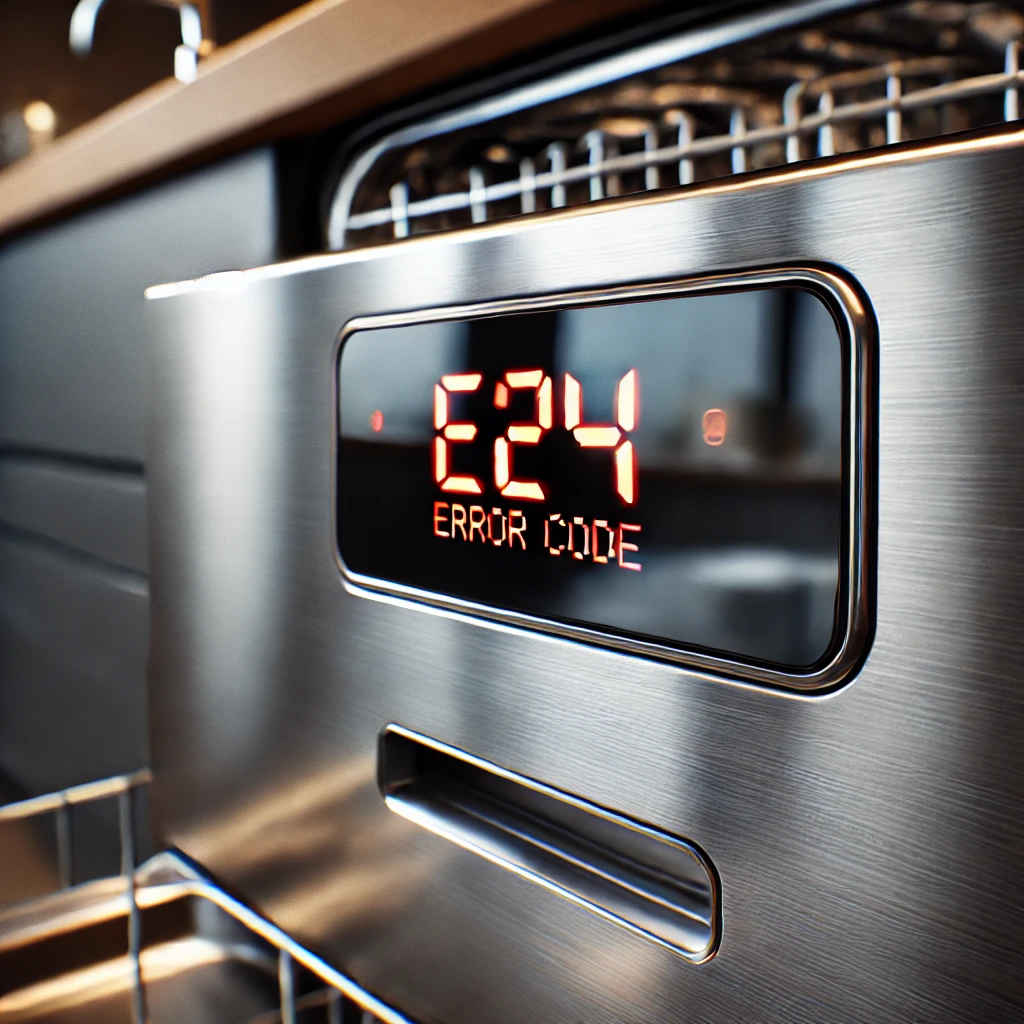
How to Fix a Dishwasher That Won't Drain: A Step-by-Step Guide
A dishwasher that won’t drain properly can be a frustrating issue, leaving dirty water pooled at the bottom of the machine and dishes that aren’t fully cleaned. However, the good news is that in many cases, this issue can be resolved without the need for professional repair. If your dishwasher isn’t draining, here’s a step-by-step guide to help you troubleshoot and fix the problem.
1. Check the Dishwasher Filter
The filter in your dishwasher is designed to catch food particles and debris to prevent them from clogging the drain. Over time, the filter can become clogged, which may lead to water not draining properly.
Steps:
- Locate the Filter: Most dishwashers have a filter located at the bottom of the tub, near the base of the spray arm.
- Remove and Clean the Filter: Remove the filter by twisting or pulling it out (refer to your dishwasher manual if necessary). Rinse the filter under warm water, using a soft brush to remove any built-up food particles or grease.
- Reinstall the Filter: Once clean, place the filter back into its position securely.
How Often to Clean: Clean the dishwasher filter at least once a month to prevent future clogs.
2. Inspect the Drain Hose
The drain hose is responsible for carrying wastewater from your dishwasher to the drain system. If the hose becomes kinked or blocked, it can prevent proper drainage.
Steps:
- Turn Off the Power: Before inspecting the hose, make sure the dishwasher is turned off and unplugged from the power source.
- Locate the Drain Hose: The drain hose is typically connected to the back of the dishwasher or under the sink where it connects to the kitchen drain.
- Check for Kinks or Blockages: Inspect the hose for any visible kinks or blockages. If you find any debris, carefully remove it.
- Detach and Clean the Hose (if necessary): If the hose appears clogged, you may need to detach it from the dishwasher and run water through it to clear any blockages.
How Often to Check: Inspect the drain hose for blockages whenever you notice draining issues.
3. Examine the Air Gap (if applicable)
Some dishwashers have an air gap, a small device installed near the sink that prevents dirty water from flowing back into the dishwasher. If the air gap becomes clogged, it can cause drainage issues.
Steps:
- Remove the Air Gap Cap: The air gap is typically located on the sink or countertop near the faucet. Remove the cap to access the inside of the air gap.
- Clean the Air Gap: Use a small brush or pipe cleaner to remove any debris that may be blocking the air gap. Rinse with water.
- Replace the Cap: After cleaning, replace the air gap cap securely.
How Often to Check: Check and clean the air gap if your dishwasher isn’t draining or if you notice water backing up into the sink.
4. Clear the Garbage Disposal
If your dishwasher’s drain hose is connected to the garbage disposal, a clog in the disposal could be the reason why your dishwasher won’t drain.
Steps:
- Run the Garbage Disposal: Turn on the garbage disposal to clear any food debris that may be blocking the drain.
- Check the Disposal for Clogs: If running the disposal doesn’t solve the issue, turn off the power and check for any clogs inside the disposal. Be careful when inspecting the disposal’s blades.
How Often to Check: If your dishwasher drains through the garbage disposal, check the disposal for clogs regularly.
5. Check the Drain Pump
The drain pump is responsible for pushing water out of the dishwasher and into the drain. If the pump is malfunctioning or clogged, your dishwasher may not drain properly.
Steps:
- Turn Off the Power: Make sure the dishwasher is turned off and unplugged before inspecting the drain pump.
- Access the Drain Pump: The drain pump is usually located at the bottom of the dishwasher. You may need to remove the lower panel to access it (refer to your manual for guidance).
- Inspect the Pump for Debris: Check the pump for any visible debris or blockages and remove them carefully.
- Test the Pump: If the pump is clear but not functioning, it may be faulty and need replacing. In this case, it’s best to consult a professional technician.
How Often to Check: The drain pump should only be inspected if you have already ruled out other common causes of drainage issues.
6. Run a Cycle with Vinegar and Baking Soda
If you suspect there’s a build-up of grease or soap scum in your dishwasher’s drain system, running a cleaning cycle with vinegar and baking soda can help dissolve the debris.
Steps:
- Add Vinegar: Pour 1 cup of white vinegar into the bottom of the dishwasher.
- Run a Hot Cycle: Run the dishwasher on the hottest setting. The vinegar will help break down grease and build-up.
- Sprinkle Baking Soda: After the cycle, sprinkle about 1 cup of baking soda at the bottom of the dishwasher.
- Run a Short Cycle: Run a short hot water cycle. The baking soda will help deodorise and scrub away any remaining residue.
How Often to Clean: Run a vinegar and baking soda cleaning cycle once a month to maintain a clean, efficient dishwasher.
7. Test the Float Switch
The float switch is a safety feature that prevents the dishwasher from overfilling. If the float is stuck in the raised position, it could prevent the dishwasher from draining.
Steps:
- Locate the Float: The float is usually located at the bottom of the dishwasher, near the front.
- Check for Sticking: Gently lift and lower the float to see if it moves freely. If it’s stuck, clean around the float to remove any debris.
- Test the Float Switch: If the float moves but the dishwasher still won’t drain, the float switch may be faulty and require replacement.
How Often to Check: Inspect the float switch if you experience frequent draining issues.
Conclusion
A dishwasher that won’t drain can often be fixed by clearing clogs, checking hoses, or cleaning filters. By following this step-by-step guide, you can troubleshoot and resolve most drainage problems quickly and easily. Regular cleaning and maintenance, such as cleaning the filter and running a vinegar cycle, can also help prevent future drainage issues. If you’ve tried these solutions and your dishwasher still isn’t draining, it may be time to contact a professional technician for further inspection.

